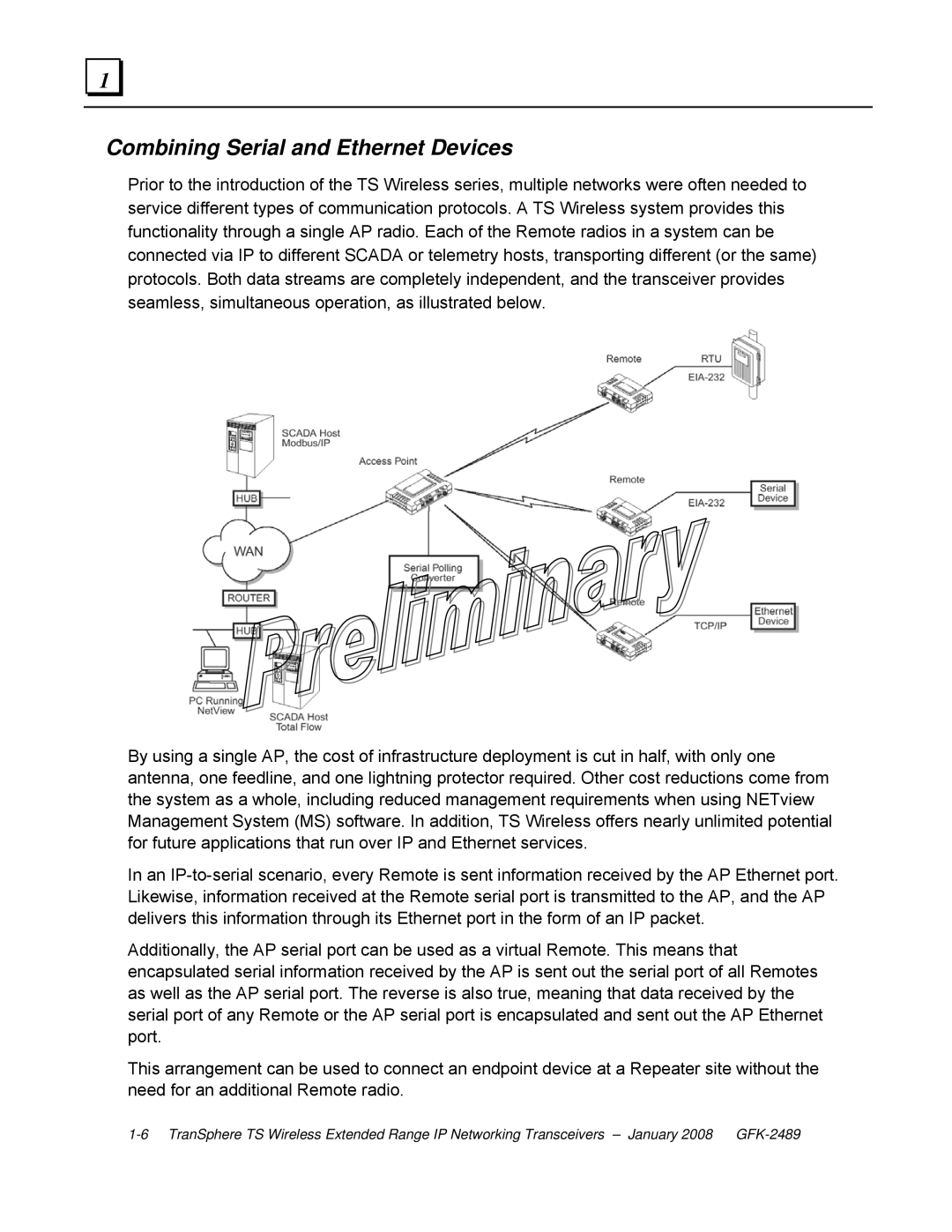
1 |
Combining Serial and Ethernet Devices
Prior to the introduction of the TS Wireless series, multiple networks were often needed to service different types of communication protocols. A TS Wireless system provides this functionality through a single AP radio. Each of the Remote radios in a system can be connected via IP to different SCADA or telemetry hosts, transporting different (or the same) protocols. Both data streams are completely independent, and the transceiver provides seamless, simultaneous operation, as illustrated below.
By using a single AP, the cost of infrastructure deployment is cut in half, with only one antenna, one feedline, and one lightning protector required. Other cost reductions come from the system as a whole, including reduced management requirements when using NETview Management System (MS) software. In addition, TS Wireless offers nearly unlimited potential for future applications that run over IP and Ethernet services.
In an
Additionally, the AP serial port can be used as a virtual Remote. This means that encapsulated serial information received by the AP is sent out the serial port of all Remotes as well as the AP serial port. The reverse is also true, meaning that data received by the serial port of any Remote or the AP serial port is encapsulated and sent out the AP Ethernet port.
This arrangement can be used to connect an endpoint device at a Repeater site without the need for an additional Remote radio.
